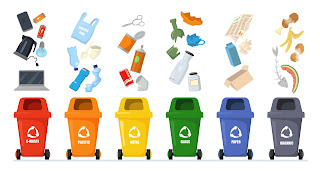The Hidden Costs of Recycling vs. Upcycling: What Businesses Need to Know?
When it comes to sustainable practices, businesses often encounter a crucial decision: recycling or upcycling? While both methods aim to reduce waste and promote sustainability, understanding the hidden costs behind each process is essential for making informed decisions. This blog explores the "recycling upcycling difference" and unpacks the financial, environmental, and operational implications of each approach, helping businesses navigate the best path toward eco-friendly success.
Recycling: The True Cost of Breaking Down Materials
Recycling involves collecting, processing, and converting waste materials into reusable raw materials. While it is a cornerstone of sustainability, it comes with costs that businesses should consider.
1. Energy-Intensive Processes
Recycling often requires significant energy to break down materials. For instance, melting down plastic, glass, or metal consumes large amounts of electricity and heat. This energy usage translates into increased utility bills and contributes to greenhouse gas emissions if non-renewable energy sources are used.
2. Sorting and Contamination
Businesses need to invest time and resources into sorting recyclable materials to prevent contamination. Contaminants, such as food residue or mixed-material packaging, can render entire batches of recyclables unusable, leading to higher operational costs and wasted efforts.
3. Market Volatility
The value of recycled materials fluctuates based on market demand. For instance, if there is a surplus of recycled plastic, its resale value drops, making recycling less economically viable for businesses.
4. Logistical Expenses
Transportation and collection of recyclables involve costs that can quickly add up, especially for large-scale operations. Businesses must also consider fees for waste management services or invest in recycling infrastructure, such as bins and compactors.
Upcycling: Transforming Waste into Value
Upcycling, on the other hand, involves creatively repurposing materials into products of higher value without breaking them down into raw materials. This innovative approach offers businesses unique advantages but also comes with its own set of challenges.
1. Creative Costs
While upcycling often reduces the need for raw materials, it requires creativity and design expertise to turn waste into marketable products. Businesses may need to hire skilled artisans or designers, which can increase upfront costs.
2. Labor-Intensive Nature
Upcycling is typically more labor-intensive than recycling. Crafting new products from existing materials requires manual effort, from cleaning and preparing items to assembling or modifying them into their new forms.
3. Limited Scalability
For businesses handling large volumes of waste, upcycling can be challenging to scale. Each item may require individual attention, making it less suitable for mass production compared to recycling.
4. Higher Initial Investment
The upfront costs of upcycling can be higher, especially when incorporating unique designs, premium branding, or specialized tools. However, the long-term benefits often outweigh these expenses, as upcycled products can command higher price points and attract eco-conscious consumers.
Recycling vs. Upcycling: Weighing the Options
Understanding the "recycling upcycling difference" is crucial for businesses striving to adopt sustainable practices. Here’s a breakdown of key factors to consider when choosing between the two:
Environmental Impact
Recycling: Reduces the need for virgin materials but consumes energy and produces emissions during processing.
Upcycling: Minimizes environmental impact by avoiding the energy-intensive breakdown of materials, offering a greener alternative.
Economic Considerations
Recycling: More scalable and suited for handling large waste volumes but susceptible to market volatility and contamination issues.
Upcycling: Higher initial costs but potential for greater profitability through premium products and brand differentiation.
Brand Perception
Recycling: Demonstrates a commitment to sustainability, though it may not significantly differentiate a brand in competitive markets.
Upcycling: Aligns with innovation and creativity, attracting environmentally conscious customers and enhancing brand value.
How SwagCycle Supports Businesses?
SwagCycle bridges the gap between recycling and upcycling by helping businesses responsibly manage their branded merchandise. Through creative upcycling solutions and partnerships with recycling organizations, SwagCycle ensures that surplus items find a second life rather than contributing to landfill waste. By leveraging their expertise, businesses can minimize costs, maximize sustainability, and build stronger connections with eco-conscious audiences.
Conclusion
The hidden costs of recycling and upcycling highlight the importance of strategic planning for businesses committed to sustainability. Recycling offers scalability and a proven framework for waste management, while upcycling provides opportunities for innovation and higher returns on investment. Understanding the "recycling upcycling difference" allows businesses to choose the approach that aligns best with their goals and resources.
Ready to make a sustainable impact? Explore SwagCycle’s solutions and discover how your business can turn waste into opportunity. Visit SwagCycle’s Upcycling vs. Recycling Guide for more insights.



Comments
Post a Comment